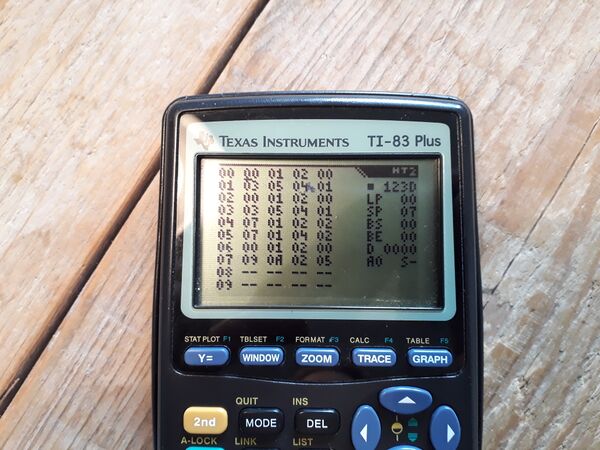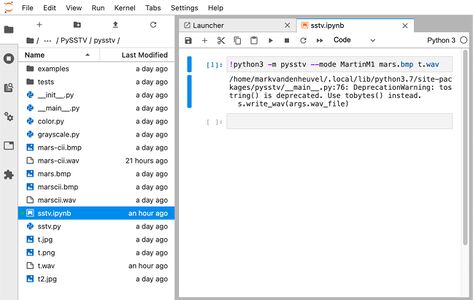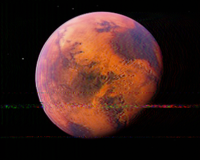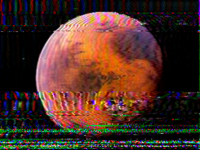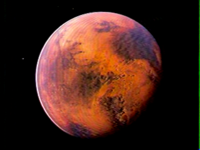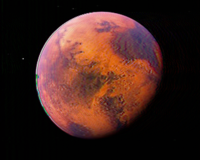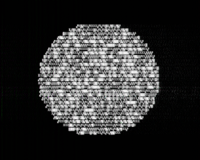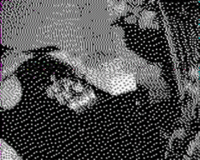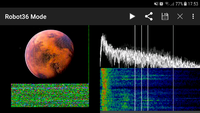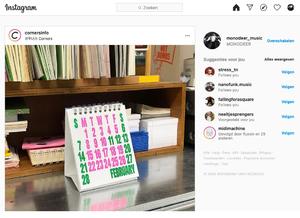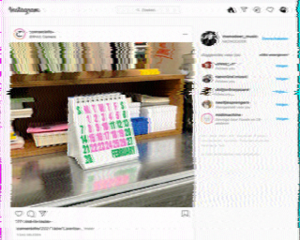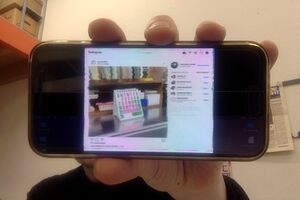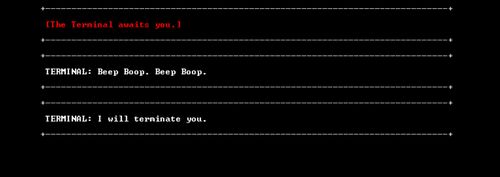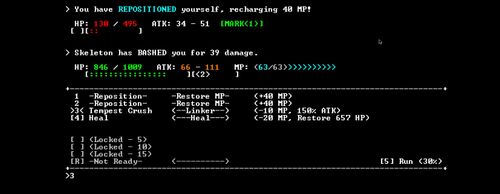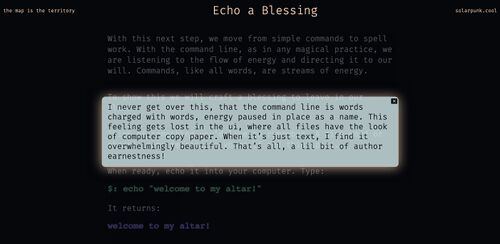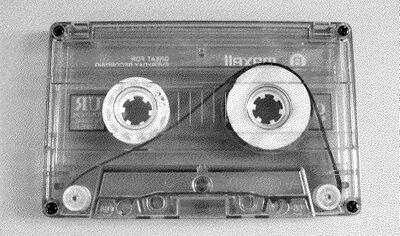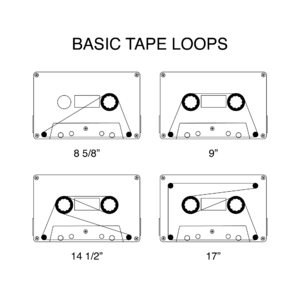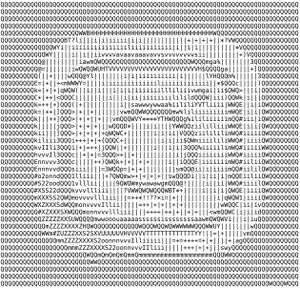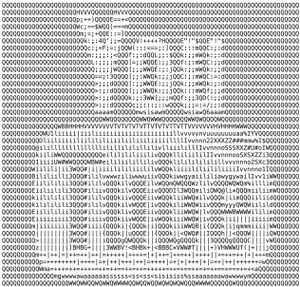User:Markvandenheuvel/prototyping hackpacts
Project content
_ (_)
____ ____ ___ ____ _ _ ____ ____ ___ ____| |_ _ ___ ____
/ _ | / ___) _ \| _ \ | | / _ )/ ___)___)/ _ | _)| |/ _ \| _ \
( ( | | ( (__| |_| | | | \ V ( (/ /| | |___ ( ( | | |__| | |_| | | | |
\_||_| \____)___/|_| |_|\_/ \____)_| (___/ \_||_|\___)_|\___/|_| |_|
_ ___
| | _ / __) _
| | _ ____| |_ _ _ _ ____ ____ ____ | |__ ___ ____ ____ ____| |_ ___
| || \ / _ ) _) | | |/ _ ) _ ) _ \ | __) _ \ / ___) \ / _ | _) /___)
| |_) | (/ /| |_| | | ( (/ ( (/ /| | | | | | | |_| | | | | | ( ( | | |__|___ |
|____/ \____)\___)____|\____)____)_| |_| |_| \___/|_| |_|_|_|\_||_|\___|___/
Project contents
- inner workings and processes of data modulation explained
- hyperfocus on detailed information regarding processes mixed with fictional elements (metaphors and inspiration from a 'guide')
- user can interact: sending > receiving information (real-time encoding / decoding)
Practical
- text-based / command-line style interface: to create a focus on other senses
- ASCII as image, code, sound: in between formats
- website, Python, on a Raspberry Pi.
Tone of voice of the interface:
- interactive fiction and text-based games (imagination!)
- tone of voice: speaking on a personal level
- Sonic Fiction / Matters Fiction: notion of 'planetary importance'
- - "Welcome to my home. You are here:" <showing pi in my house>
- - "You traveled a long way to get here in a very short time""
- - "You just looked outside through a window, staring at the screen again, you think about the past."
- - "Lately, I often got asked if I am a robot. Are a robot. Are you a robot?"
- - "As a kid, I used to record the sound of games instead of playing them: let me show it to you"
Output
- website (publication) hosted on a Raspberry Pi as publication
- part of the workflow will be used for audio/visual performance based on modulation of data (magnetic tape)
Inspiration taken from tape recordings of:
- 'Alfa Training' course for motivation, regaining autonomy, and confidence to make life and work decisions
- software (detail: music snippets of music in between)
- recording of computer course: 'How to get online?' (mechanical typing sounds, registration)
- guide/course: leader/character, bumpers and theme songs and scores, silence for executing
- blending in personal experiences
Prototypes so far:
- IRC bot experiments: (Urzaloid Franklin)
- 1-Bit sound synthesis (making music on a 'hacked' TI calculator)
- SSTV workflow tests in Python: modulating images (sending/receiving – encoding/decoding, storing on tape)
- AALIB experiments + Ascii (quilting): images converted to ascci via a generator in Python
- KCS workflow: txt input > generated text > KSC audio > HTML
- API scraping(Planetary NASA data mixed with other sources)
- A)PART to de(PART PY.RATE.CHNC workshop: collaborative tape loop creation and recording (materiality of magnetic tape, deconstruction of sound, sonic fiction)
- interactive fiction + text based interface writing en generating text based on input.
Hackpacts
__ __ ______ ___ ___ _______ ________ ______ __ __ ______ ______ ___
/" | | "\ / " \ |" \ /" | /" "| /" )/" _ "\ /" | | "\ / " \ / " \ |" |
(: (__) :) // ____ \ \ \ // |(: ______)(: \___/(: ( \___)(: (__) :) // ____ \ // ____ \ || |
\/ \/ / / ) :)/\\ \/. | \/ | \___ \ \/ \ \/ \/ / / ) :)/ / ) :)|: |
// __ \\(: (____/ //|: \. | // ___)_ __/ \\ // \ _ // __ \\(: (____/ //(: (____/ // \ |___
(: ( ) :)\ / |. \ /: |(: "| /" \ :)(: _) \ (: ( ) :)\ / \ / ( \_|: \
\__| |__/ \"_____/ |___|\__/|___| \_______)(_______/ \_______) \__| |__/ \"_____/ \"_____/ \_______)
_______ _______ ______ ___________ ______ ___________ ___ ___ __ _____ ___ _______
| __ "\ /" \ / " \(" _ ")/ " \(" _ ")|" \/" ||" \ (\" \|" \ /" _ "|
(. |__) :)|: | // ____ \)__/ \\__/// ____ \)__/ \\__/ \ \ / || | |.\\ \ |(: ( \___)
|: ____/ |_____/ )/ / ) :) \\_ / / / ) :) \\_ / \\ \/ |: | |: \. \\ | \/ \
(| / // /(: (____/ // |. | (: (____/ // |. | / / |. | |. \ \. | // \ ___
/|__/ \ |: __ \ \ / \: | \ / \: | / / /\ |\| \ \ |(: _( _|
(_______) |__| \___) \"_____/ \__| \"_____/ \__| |___/ (__\_|_)\___|\____\) \_______)
1-bit music: TI-83+ calculator experiments
I came across an open-source project that makes it possible to 'hack' old Texas Instruments calculators and turn them into 1-bit music composing tool (instrument). The program ([Houston Tracker)] is still not being used so much and remains quite obscure. HT2 converts the binary output of the TI-calculator to generate 1-bit sound. What I think is really interesting is that 1-bit sound represents the on/off binary basics of computing. The 1-bit sound is therefore close to the inner process.
Key points
- 1-bit music programming and playback (using Houston Tracker II by UTZ)
- materializing binary data + sound of the CPU (on/off)
- recording on cassette tape: analog processing of digital information
- the benefits of working with limitations
- 'Zombie media': reappropriation of obsolete tech and explore it's potential instead of discarding it: what does it mean?
- implement it in today's workflow (audio/visual, programming, etc)
playful ideas & potentials to further explore:
- 1-bit sound publication
- implementing graphics: bitmaps
- How to embed this in a modern context? What's the use?
- BASIC programming language
- 1-bit sound publication
To spread this project and both music, I thought about making a publication/release/demo in one.
- write a 4 track album for it and release it on a TI-83.
- People that buy it would receive a TI with the tracks on it (collected from thrift store / Marktplaats)
- mail it to people
- way to get started 'hands-on
- See how tracks were produced might get people started
- enlarge interest, spread the word & expand community?
This way, the public can not only listen but also directly engage and get their hands dirty if preferred. What I also think is interesting that in contrary to making music with the sound chip of obsolete gaming consoles is that it's much further detached from retro aesthetics. So it focuses much more on the tech part and thinking how to use this device otherwise.
links & Resources
- TILP: open source program for memory flashing on TI
- Houston Tracker 2: https://www.irrlichtproject.de/houston/houston1/index.html
- DOORS GUI: https://dcs.cemetech.net/index.php/Doors_CS_7_Scratchwork
- graphics: https://www.ticalc.org/pub/win/graphics/
- 1-bit synthesis paper: https://www.gwern.net/docs/cs/2020-troise.pdf
- 1-bit synthesis techniques: https://phd.protodome.com/#anchor-pulse-width-sweep\
- Graphlink cablefor converting binary data to sound: https://www.amazon.com/Texas-Instruments-94327-Graphlink-USB/dp/B00006BXBS
SSTV (Slow Scan Television) experiments
SSTV or Slow scan Television – originally invented as an analog method in the late '60s but accessible to the public in the early 90s when the custom radio equipment was replaced by PC software – is a protocol for sending images over audio frequencies. The sound holds the information of what color where to place, line by line. This way, the image is slowly generated when decoding the audio in real-time. This method is still used today by the HAM amateur radio community for sending and collecting images. Next to that, the International Space station (ISS) still sends images to planet earth this way. The way SSTV generates images is closely related to the material process of digital printing on paper.
SSTV Workflow experiments
Signal published on website:
https://hub.xpub.nl/sandbox/~markvandenheuvel/
Key points
- modulation: protocol/standard to send images over radio
- workflows and experiments using Python3 and bash in Jupyter Notebook
- exploring the materiality of data via sound
- 'slow' data transmission (in contrast with invisible processes and speed)
- encoding /decoding: deconstruction of data
- both interests combined: lo-tech graphics & sound!
SSTV Workflow in use: Image to SSTV signal received by phone
SSTV workflow and decoding via app
LISTEN
- Sound file of Mars image(mode: MartinM1: File:Sstv mars.mp3
- Sound file of Mars ascii image (mode: MartinM1) File:Sstv ascii mars.mp3
Instagram to SSTV: Instagrain Broadcasting
Listen to this image:
https://hub.xpub.nl/sandbox/~markvandenheuvel/results/t.wav
resources:
- boadcasting software: https://www.qsl.net/kd6cji/downloads.html
- Python scripts to convert images to audio: https://pypi.org/project/PySSTV/
- general resources: http://users.belgacom.net/hamradio/sat-info.htm
- RXSSTV: http://users.belgacom.net/hamradio/rxsstv.htm
- SSTV tools (encoding/decoding) http://www.dxatlas.com/sstvtools/
- recent SSTV project: https://hsbp.org/rpi-sstv
- Pictures On Cassette: https://www.youtube.com/watch?v=c38dLDQoRtM
KCS: digital data standard explorations
KCS or Kansas City Standard was developed to convert code (in the form of ASCII text) into sound so it could be stored on media such as magnetic tape but became also suitable to broadcast over radio. This way, its data became more easily interchangeable. KSC is still being used today to restore large quantities of archival material that was stored on magnetic tape. There are other standards that are closely related to this standard. KCS was an attempt to standardize (For instance, the Commodore 64 had its own method however this was very much prone to errors.)
Key Points
- KCS workflow setup in Python (Jupyter Notebook) (text input > generated text > KSC audio > HTML)
- slow data transmission / image arise line by line
- materiality of data via sound (physical connection, embodiment of a process)
- deconstruction: encoding/decoding
- storage and playback (on audio cassette)
playful ideas & potentials to further explore:
- bot that outputs encoded texts via audio
- bot that outputs encoded ASCII art (ASCII IMAGES) via audio
- printing out text receipt printer
- creating a modern Flexi Fisc Floppy Rom: https://en.wikipedia.org/wiki/Kansas_City_standard#/media/File:FloppyRom_Magazine.jpg
resources
- KCS standard: https://en.wikipedia.org/wiki/Kansas_City_standard
- Storing https://www.instructables.com/Storing-files-on-an-audio-cassette/
- future of data storage: https://spectrum.ieee.org/computing/hardware/why-the-future-of-data-storage-is-still-magnetic-tape
- Data Files on Tape (A Modern Attempt) https://youtu.be/muJDUonIOz8
Interactive Fiction/'Text-based' adventure
File:Https://slideplayer.com/slide/13434284/80/images/9/Branching+Story+Example.jpg
https://en.wikipedia.org/wiki/Text-based_game https://en.wikipedia.org/wiki/Ergodic_literature
Tutorial with David Moroto: https://www.davidmaroto.info/
"I think we met before... You find yourself in an empty space. Look to the right… What do you see? If you look to the left, there is a window that allows you to look at the past. Behind you is a door to future"
Inspiration & resources
SanctuaryRPG - (Classic Text Adventure Game)
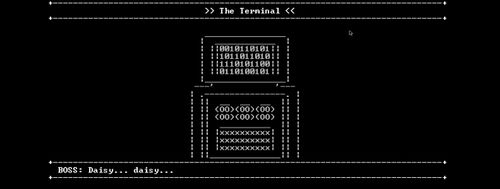
Inspiration: Solarpunk: The map is the territory
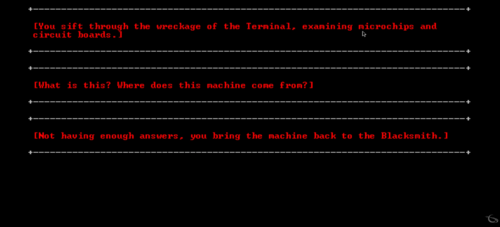
Inspiration regarding tone of voice: Shadow Wolf Zine (ASCCI zine by Legowelt about various topics)
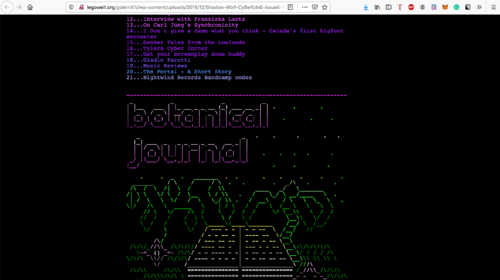
PI: Selfhosting IRC + bot
https://pythonspot.com/building-an-irc-bot/
Urzaloid Franklin
Sandbox as a publication
- showing where it is! (this is where you are!)
- what happens when you visit (exposing a process with the emphasis on materiality)
resources:
- shell: showing processes! https://github.com/jupyter/terminado
Tape + analog sound/recording experiments
Deconstruction workshop: materializing data over sound
- recording sound of a deconstruction process: transfer to the physical carrier (analog tape)
- recording data of images: broadcast SSTV signal
- material combined in audio-visual performance
- the delay and reverb on binairy sounds - tapeloops: KCS code loops that generate textual / ascii output? - 1-bit drone
> https://pzwiki.wdka.nl/mediadesign/A)PART_to_de(PART
main question:
- How do people interact with these processes and connect it the notion of Sonic Fiction?
AALIB + ASCCI generating experiments
>>>>>>>C0/\/\/\/\0N F/\CT0R<<<<<<<
Related:
- 'wacky tech' (low and obsolete tech processes )
- what meaning emerges when low-tech meets high-tech
- regaining autonomy and the value of misusing technology
- revealing inner workings (trough sonification of a process)
- obsolete systems as a method (not retro!)
- the affordances of not emulating
- "sonic fiction"
- meaning that occurs when going between formats
general links:
- https://www.westminsterpapers.org/articles/10.16997/wpcc.209/print/
- https://www.electronicdesign.com/industrial-automation/article/21808186/sending-data-over-sound-how-and-why
- https://spectrum.ieee.org/computing/hardware/why-the-future-of-data-storage-is-still-magnetic-tape
- http://screenl.es/slow.html

